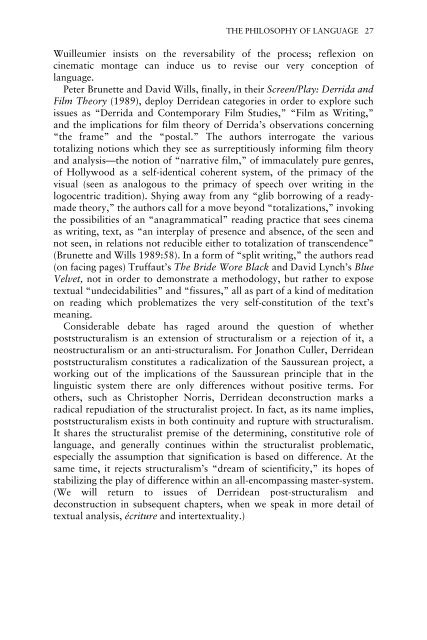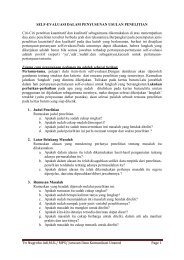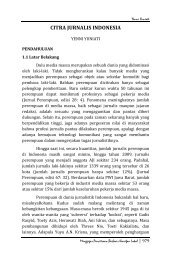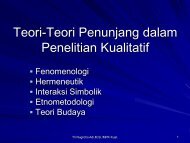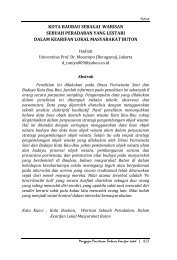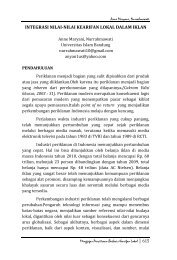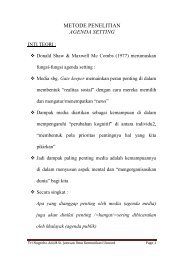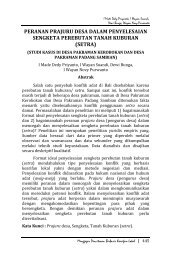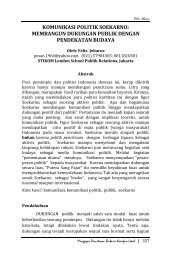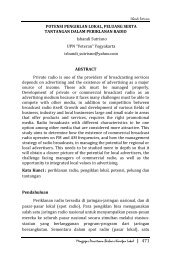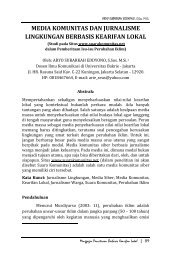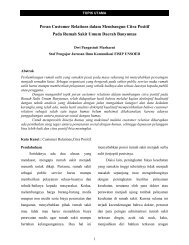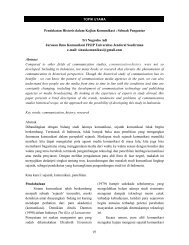New Vocabularies in Film Semiotics
New Vocabularies in Film Semiotics
New Vocabularies in Film Semiotics
Create successful ePaper yourself
Turn your PDF publications into a flip-book with our unique Google optimized e-Paper software.
THE PHILOSOPHY OF LANGUAGE 27<br />
Wuilleumier <strong>in</strong>sists on the reversability of the process; reflexion on<br />
c<strong>in</strong>ematic montage can <strong>in</strong>duce us to revise our very conception of<br />
language.<br />
Peter Brunette and David Wills, f<strong>in</strong>ally, <strong>in</strong> their Screen/Play: Derrida and<br />
<strong>Film</strong> Theory (1989), deploy Derridean categories <strong>in</strong> order to explore such<br />
issues as “Derrida and Contemporary <strong>Film</strong> Studies,” “<strong>Film</strong> as Writ<strong>in</strong>g,”<br />
and the implications for film theory of Derrida’s observations concern<strong>in</strong>g<br />
“the frame” and the “postal.” The authors <strong>in</strong>terrogate the various<br />
totaliz<strong>in</strong>g notions which they see as surreptitiously <strong>in</strong>form<strong>in</strong>g film theory<br />
and analysis—the notion of “narrative film,” of immaculately pure genres,<br />
of Hollywood as a self-identical coherent system, of the primacy of the<br />
visual (seen as analogous to the primacy of speech over writ<strong>in</strong>g <strong>in</strong> the<br />
logocentric tradition). Shy<strong>in</strong>g away from any “glib borrow<strong>in</strong>g of a readymade<br />
theory,” the authors call for a move beyond “totalizations,” <strong>in</strong>vok<strong>in</strong>g<br />
the possibilities of an “anagrammatical” read<strong>in</strong>g practice that sees c<strong>in</strong>ema<br />
as writ<strong>in</strong>g, text, as “an <strong>in</strong>terplay of presence and absence, of the seen and<br />
not seen, <strong>in</strong> relations not reducible either to totalization of transcendence”<br />
(Brunette and Wills 1989:58). In a form of “split writ<strong>in</strong>g,” the authors read<br />
(on fac<strong>in</strong>g pages) Truffaut’s The Bride Wore Black and David Lynch’s Blue<br />
Velvet, not <strong>in</strong> order to demonstrate a methodology, but rather to expose<br />
textual “undecidabilities” and “fissures,” all as part of a k<strong>in</strong>d of meditation<br />
on read<strong>in</strong>g which problematizes the very self-constitution of the text’s<br />
mean<strong>in</strong>g.<br />
Considerable debate has raged around the question of whether<br />
poststructuralism is an extension of structuralism or a rejection of it, a<br />
neostructuralism or an anti-structuralism. For Jonathon Culler, Derridean<br />
poststructuralism constitutes a radicalization of the Saussurean project, a<br />
work<strong>in</strong>g out of the implications of the Saussurean pr<strong>in</strong>ciple that <strong>in</strong> the<br />
l<strong>in</strong>guistic system there are only differences without positive terms. For<br />
others, such as Christopher Norris, Derridean deconstruction marks a<br />
radical repudiation of the structuralist project. In fact, as its name implies,<br />
poststructuralism exists <strong>in</strong> both cont<strong>in</strong>uity and rupture with structuralism.<br />
It shares the structuralist premise of the determ<strong>in</strong><strong>in</strong>g, constitutive role of<br />
language, and generally cont<strong>in</strong>ues with<strong>in</strong> the structuralist problematic,<br />
especially the assumption that signification is based on difference. At the<br />
same time, it rejects structuralism’s “dream of scientificity,” its hopes of<br />
stabiliz<strong>in</strong>g the play of difference with<strong>in</strong> an all-encompass<strong>in</strong>g master-system.<br />
(We will return to issues of Derridean post-structuralism and<br />
deconstruction <strong>in</strong> subsequent chapters, when we speak <strong>in</strong> more detail of<br />
textual analysis, écriture and <strong>in</strong>tertextuality.)


